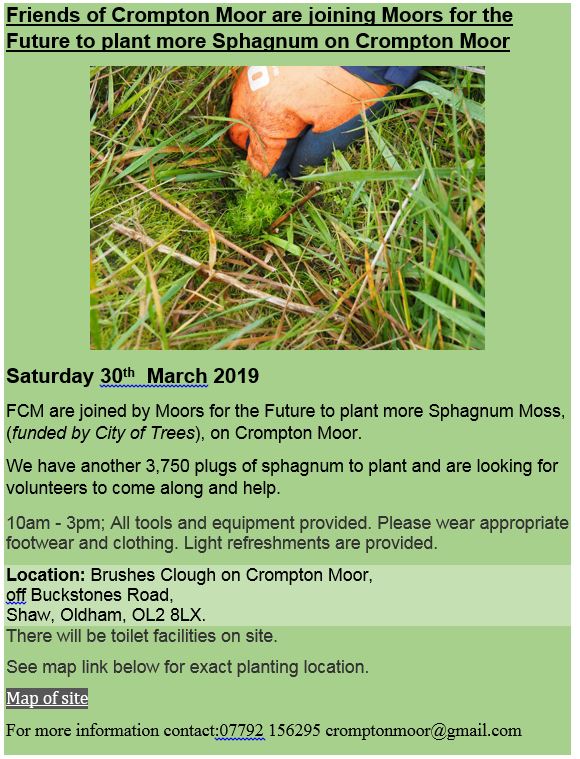
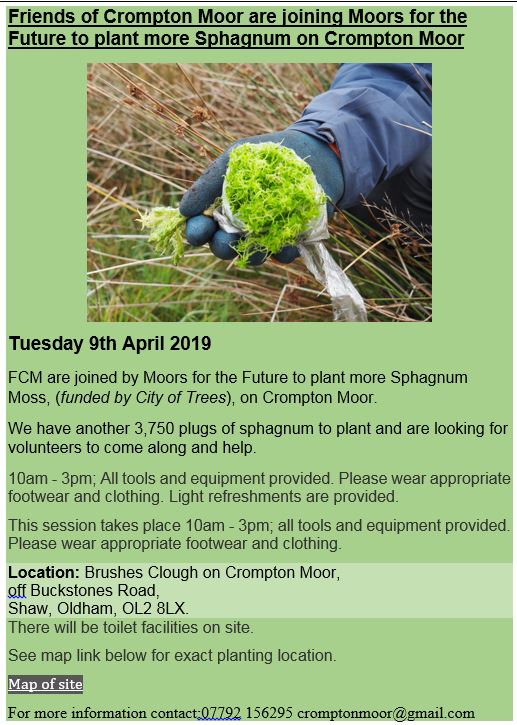




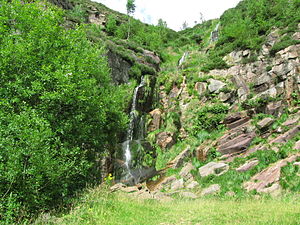
Hope you can join me this Sunday, our event being the creation of new drainage for the footpath adjacent to Whitesides, to the adjacent brook.
The weather forecast for Sunday is sunny intervals and a gentle breeze, likely temperature of 5º/9º and 6/7 mph winds so ensure you have your favourite hot & or cold liquids, warm clothing, appropriate footwear and a packed lunch if you are up for the day – it may feel colder than it really is depending on where we are on the moor.
If you have any issues that you may wish to discuss prior to Sunday, please do not hesitate to email (on either address) or text / phone me on 07961107860.
For those of you that have not already done so, please could you let me know if you intend to join us on the day.
I look forward to seeing you in the Crompton Moor Car Park from 10.30 onwards on Sunday. Thank you.
Kindest Regards – Edward John Fulton (aka Ed / Eddie). Countryside Volunteer Ranger, (Mob) 07961 107860 [Calls may be recorded], (Text) 07961 107860, (Fax) 01706 661813, (E) edward@edwardjohnfulton.uk , (E) edward.fulton@btinternet.uk
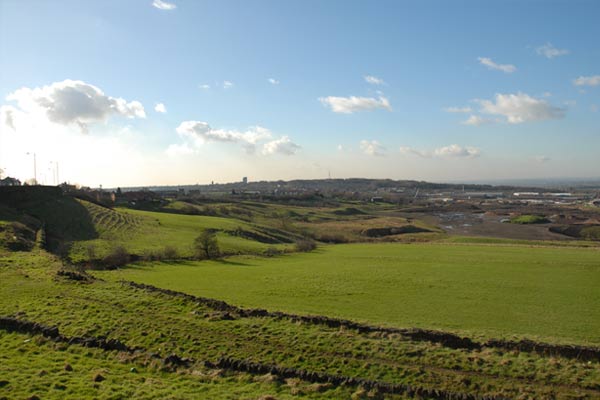
In a reply to the Leader of the Opposition and the Liberal Democrat Group on Oldham Council, Councillor Howard Sykes MBE, a Conservative Minister conceded that Government policy appears to allow for building less housing than is currently planned under Greater Manchester Spatial Framework proposals and the green belt can only be built on ‘in exceptional circumstances’.
Councillor Sykes wrote to the Secretary of State for Housing, Communities and Local Government, James Brokenshire MP, in February. Kit Malthouse MP responded on Mr Brokenshire’s behalf earlier this month as Minister for Housing.
Although original government estimates were that there be a need for 213,380 extra homes in Greater Manchester by 2035, later projections released by the Office for National Statistics in 2016 put the figure at only 164,000. In his letter, Councillor Sykes asked if would in fact be permissible for the ten local authorities in Greater Manchester to use the lower figure to decide on the number of homes to be built under the Greater Manchester Spatial Framework.
In his response, Mr Malthouse reiterated Conservative Government policy that the higher figure should still be used as ‘the standard method’ for determining housing need ‘until an amended version of the formula can be released’. However, he concedes that this ‘does not represent a mandatory target’, and that local authorities ‘may decide that exceptional circumstances justify the use of an alternative method of determining housing need’ with this being ‘tested by the Planning Inspectorate’.
Councillor Sykes said: “The difference between the earlier and later figures is a massive 50,000 homes. It is my view that there would be ‘exceptional circumstances’ in the ten Greater Manchester local authorities and the Greater Manchester Mayor choosing to use that lower figure because this would save much, if not all, of our previous and irreplaceable Green Belt from housing development.”
“In Oldham, the difference is 2,587 less properties to build; a similar figure to the number of new homes earmarked for Green Belt sites in my part of the world at Kingsway South, Beal Valley, Broadbent Moss, Cowlishaw and Hanging Chadder.”
The Minister also made clear that the Government’s own guidance, the National Planning Policy Framework, makes clear that ‘only in exceptional circumstances’ can the Green Belt be built upon, and that local authorities must first make ‘best use of brownfield land, optimise densities and determined if need can be met my neighbouring authorities’.
Commenting Councillor Sykes added: “The Oldham Council Liberal Democrat Group made clear in its latest letter of objection to the recent Greater Manchester Spatial Framework Consultation that our view remains unchanged that our replaceable Green Belt and Other Protected Open land sites must not be built upon.
“Instead we want to see new housing on brownfield sites, new homes in our redundant textile mills, factories, and shops, more homes with higher densities in Oldham town centre, and our many existing empty homes brought back into use. There are no ‘exceptional circumstances’ in this Borough which justify concreting over a single blade of grass!”.

The Leader of the Opposition and the Liberal Democrat Group on Oldham Council, Councillor Howard Sykes MBE, has written to the Council Leader congratulating him on establishing a ‘night-time economy taskforce’ and asking him to do the same for the day-time economy to help save high streets across the borough.
Commenting Councillor Sykes said: “Our high streets are slowly dying and if we want vibrant retail and leisure centres across our borough, not just in Oldham but also in Shaw, Uppermill, Royton, Lees, Chadderton and Failsworth, we must do all we can to help them. Otherwise I fear that more and more stores will close in the Spindles and Town Square shopping centres and we will see the encroachment of yet more charity shops, which benefit from being exempted from business rates and sometimes occupying premises rent-free.”
“I have written to the Leader of the Council asking him to establish a Daytime Economy Task Force to draw up an action plan to save our high streets based on an examination of the recommendations of two recent published reports. These are The High Street Report that was commissioned by the Government and chaired by Sir John Timpson, and a report published by the Institute of Place Management and Manchester Metropolitan University called High Street 2030: Achieving Change.”
“I also believe we should look at the merits of establishing more Business Improvement Districts for our district centres to support our retailers and leisure operators. I do hope that the Leader will be able to take my suggestions on board.”E
The letter is below
The two reports can be found at
http://www.placemanagement.org/news/achieving-change-high-street-2030-report-released/
Dear Councillor Fielding,
Further to my recent letter to you urging Oldham Council to make a bid to the Government’s new Future High Streets Fund. I am writing to you again with further suggestions that I hope if adopted by your Administration would help make our town and district retail and leisure economies more vibrant.
You may be unaware that the Government commissioned Sir John Timpson to convene a panel of experts and to produce a report identifying practical steps that local authorities and their retail partners could implement to reinvigorate the retail offer on their high streets. The ‘High Street Report’ was published in December.
In addition, the Institute of Place Management and Manchester Metropolitan University published a complimentary report ‘High Street 2030: Achieving Change’.
http://www.placemanagement.org/news/achieving-change-high-street-2030-report-released/
May I suggest this taskforce take a detailed look at the two reports referred to above and develop an action plan for our town and district centres?
Can I ask if Oldham Council is currently working on any plans to develop further Business Improvement Districts in our borough, particularly for out outlying district centres? If the answer is no would your Administration give this suggestion some consideration.
I shall look forward to receiving your response.
Best wishes,
Howard Sykes

The Leader of the Opposition and the Liberal Democrat Group on Oldham Council, Councillor Howard Sykes MBE, has submitted a strongly-worded letter of objection on behalf of the Oldham Liberal Democrat Group outlining why the revised Greater Manchester Spatial Framework proposals still remain ‘a massive and inequitable land grab’ in Crompton, Shaw and Royton (deadline for submissions was the 18 March).
These proposals will result in the devastation of local Green Belt and Other Protected Open Land Sites for housing development being ‘completely unacceptable’.
Councillor Sykes said: “The Liberal Democrat position remains clear and unequivocal. We want to see all new housing developments built on brownfield sites or on existing sites with planning permission for housing, or through bringing existing empty homes back into use, or the conversion of empty mills, offices and factories into dwellings. We are implacably opposed to any building on any of our irreplaceable Green Belt or on our Protected Open Land sites until all this has been done.”
“I also want to see our Greater Manchester Council leaders and the Mayor lobbying government hard to reduce the housing figures to match the most recent growth projections from 2016 – that would mean 50,000 less houses to build – and I want to see them fight for more money from the Treasury to enable us to remediate our Brownfield sites to make them ready for housing development.”
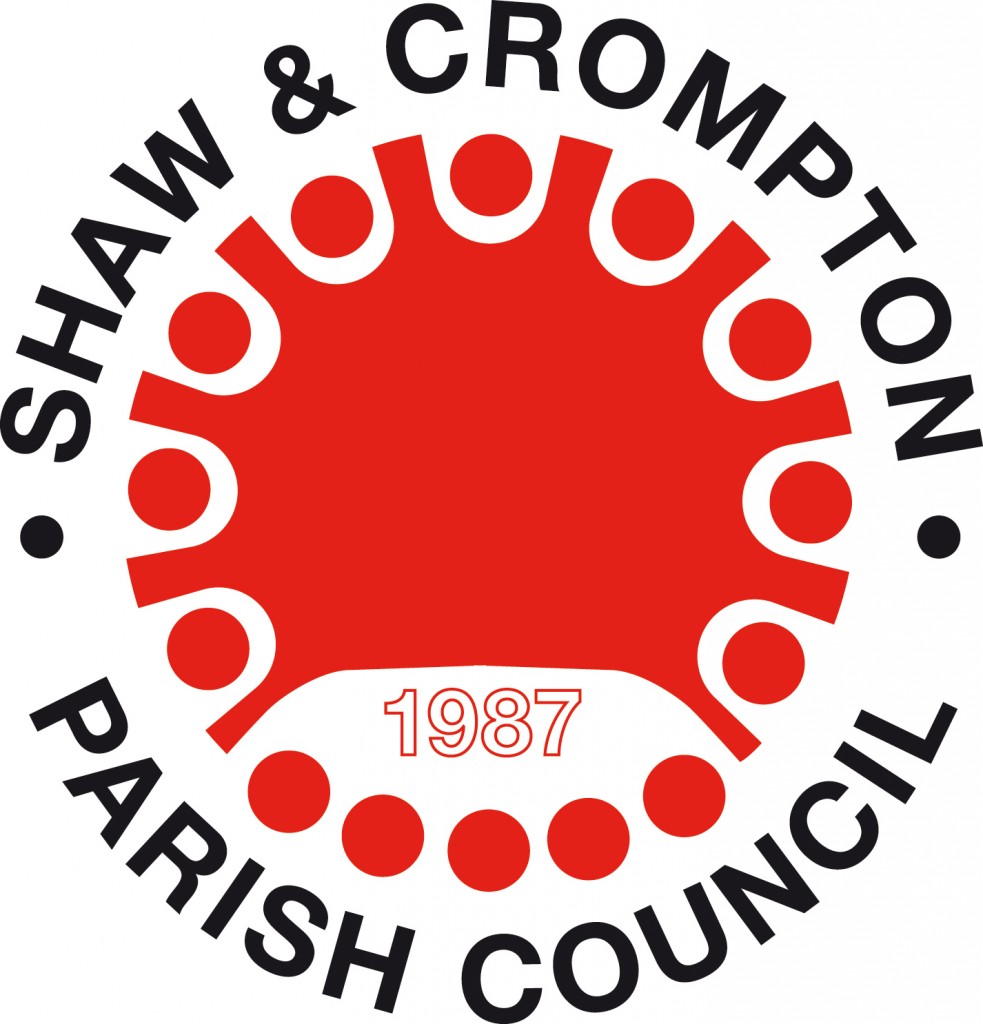

TO THE: Greater Manchester Spatial Framework Consultation Team
The Oldham Council Liberal Democrat Group; the official opposition, comprising of eight elected members, representing the Crompton, Shaw and Saddleworth North Wards of the Oldham Metropolitan Borough Council, wish to make this collective submission in response to the consultation on the Greater Manchester Spatial Framework Revised Draft 2019.
Oldham is now expected to build an extra 14,290 homes by 2037. Sites allocated for development in Crompton, Shaw and Royton (four electoral wards) are expected under current plans to accommodate 3,768 new homes and 201,270 square metres of industrial development.
These figures have arisen because the Conservative Government is insistent that the ten local authorities in Greater Manchester continue to utilise the population data issued by the Department of Communities and Local Government in 2012 to determine the local ‘objectively assessed need’ for new housing. These figures estimated far higher rates of population growth than was indicated by data published later in 2016 by the Office for National Statistics.
For clarity, the 2012 figures published by the Department of Communities and Local Government indicated that households in Greater Manchester would grow by 213,380 by 2035 or 18.75%, however, the more recent figures published by the Office for National Statistics in 2016 predict an increase of only 164,006 or 14.55%.
This is a massive difference of almost 50,000 homes.
For Oldham the difference would amount to 2,587 less properties to build. This is a significant proportion of the 3,768 new homes that the plan projects will be built on greenfield sites at Crompton, Shaw and Royton. The adoption of the lower figures would mean that most of the irreplaceable Green Belt and OPOL sites allocated for housing development in these areas would be saved.
As such, the Liberal Democrat Group on Oldham Council has written to the Secretary of State for Communities and Housing, The Rt. Hon James Brokenshire MP, asking if it would be permissible to instead use the lower 2016 figures for the ‘housing needs assessment’.
We urge the Mayor of Greater Manchester and the leaders of the ten local authorities of the Greater Manchester Combined Authority to do the same.
In the Government’s housing white paper, Fixing our Broken Housing Market, published in February 2017 it states that, whilst expecting local authorities to establish their ‘objectively assessed need’ for new housing, that the government is committed to ‘maintain existing strong protections for the Green Belt, and clarifying that Green Belt boundaries should be amended only in exceptional circumstances’ and that ‘the presumption should be that brownfield land is suitable for housing unless there are clear and specific reasons to the contrary’ with ‘great weight…attached to the value of using suitable brownfield land within settlements for homes.’
The Mayor of Greater Manchester Andy Burnham also states in his Foreword to the 2019 Revised Draft that he is committed to ‘a brownfield-first approach to the release of sites for development.’
The Government’s and the Mayor’s positions are both highly commendable. Like them, the Liberal Democrat Group on Oldham Council believe strongly that any proposed new housing development should take place on brownfield sites first and that no Green Belt or OPOL sites should be encroached upon whilst such brownfield land still exists.
We therefore welcome the publication by Oldham Council of its Brownfield Register and urge the Council to encourage elected members and the public to submit suggestions for consideration of additional brownfield sites and unoccupied empty buildings with the potential for conversion. In this way, the Oldham Liberal Democrat Group are convinced that the demand for new housing could be met solely through the allocation of brownfield sites. The early development of existing sites with planning permission for housing development, town centre residential developments built to a higher density, bringing empty homes back into use, and converting empty buildings, such as offices and mills, into homes would eliminate the need to allocate any Green Belt or OPOL sites for housing development.
One issue inhibiting the development of brownfield sites and the conversion of former industrial premises for housing is the cost of remediation. In Oldham, many such sites suffer from significant below-ground contamination or buildings with contaminated infrastructure, the result of previous industrial use as a cotton mill; chemical and coal gas plant; coal mine; or dye works.
Decontaminating such sites is very expensive and this cost is a significant disincentive to local authorities and to housing developers as it can make housing developments unaffordable.
According to Department of Trade figures, the UK has approximately 1,000,000 acres of contaminated land, much of it in Northern towns, like Oldham, a legacy of their prominence as world leaders in the Industrial Revolution. As the estimated average cost of cleaning up contaminated land is £250,000 per acre, expenditure of £250 billion would be required.
Comparably, the amount of Government funding available to address remediation is wholly inadequate. There is a £2.3 billion Housing Infrastructure Fund and only a small part of this money will be made available for remediation. The Government allocated a miniscule £45 million for land remediation under the new Land Release Fund.
If the Housing Infrastructure and Land Release Funds were made available at these same rates and every penny was set aside every year solely for remediation, it would take over 100 years to make all brownfield sites across the country free of contamination.
As such, the Oldham Liberal Democrat Group feels that it is imperative that the Mayor of Greater Manchester and the ten local authority leaders join with local MPs, housing developers and social landlords to lobby the Government to significantly increase the derisory sums currently made available to address remediation. Without more money we feel that the government’s stated aspiration to ensure that brownfield sites make the ‘maximum contribution’ will prove to be a baseless and hollow claim.
Turning now to the specific sites earmarked for housing development under the GMSF Revised Draft in the areas of Crompton, Shaw and Royton. The Oldham Liberal Democrat Group welcomes the overall reduction in the number of homes that the revised plan proposes to be built on the sites at Kingsway South (Policy GM Allocation 3), Beal Valley (14), Cowlishaw (16), and Hanging Chadder (17), but opposes the identification of a new greenfield site at Thornham Old Road (21) (600 homes) and the near fifty percent increase in housing numbers proposed for Broadbent Moss (Policy GM Allocation 15) (1,450 from 1,000).
Although there is a small overall reduction in housing numbers from 4,040 (2016 proposal) to 3,768 (2019 proposal), in our view this still represents a massive and inequitable land grab in Crompton, Shaw and Royton and the devastation of our local Green Belt and OPOL (other protected open land).
For clarity, it is the view of the Oldham Liberal Democrat Group that housing development on Green Belt or OPOL sites is completely unacceptable whilst brownfield sites, sites with existing planning permission for new homes, empty homes, and derelict and unloved town centres or industrial buildings that could be utilised for housing remain.
In our view, alternative brownfield sitesshould be considered beforethe development of Green Belt or OPOL sites and a fairer apportionment of housing development across the Metropolitan Borough should also be considered rather than the disproportionate development currently proposed in Crompton, Shaw and Royton. This may seem simplistic as other wards may have few sites, but there is the possibility to use industrial sites, such as those in Derker which still await development.
The draft GMSF readily identifies the need for a very significant investment in transport infrastructure. Improved transport is a critical obstacle to be overcome to ensure the success of the expansion desired in the GMSF. Many of the strategic allocations are sited near our motorway corridors, ostensibly to take advantage of existing networks.
However, our existing motorways are frequently constrained by high levels of congestion resulting in unacceptable journey times and additional traffic jams on feeder and local roads. The projected growth of industrial warehousing, office space and new homes will require monumental investment in transport infrastructure. It is of paramount importance to ensure that the transport infrastructure is in place before other building takes place.
All the sites identified for development, especially those in Shaw and Crompton are devoid of good vehicular access and there is no obvious way to make the necessary improvements.
Cowlishaw has no acceptable roads leading into the proposed site. The topography around the Whitfield farm area makes it difficult to envisage an elegant solution to site access. Similarly, the Beal Valley site is currently served by a narrow road and the desire to facilitate access to this site by enhancing links to Shaw and Crompton Metrolink Station seem incredulous; the only current access, via Beal Lane, is saturated with existing traffic and HGV movements to and from existing businesses which are large distribution centres. The car park at Shaw and Crompton Metrolink is already at capacity and more space is urgently needed here and elsewhere on the line.
We welcome the proposal to construct a new Metrolink stop at Cop Road and would urge consideration for developing other stops elsewhere on the Rochdale – Oldham Metrolink line (for example, at Dunwood Park) to improve accessibility.
The increase in population will necessitate provision of additional services. The GMSF does not appear to adequately address available funding to deliver on these requirements.
In Shaw and Crompton, the necessary infrastructure to support our existing population is lacking. We have primary schools that are overcrowded and full; a secondary school that is falling apart; a dilapidated Health Centre that is near cardiac arrest; no swimming facilities or dry leisure provision; precious few youth facilities and no municipal tip.
Under the proposals, 1,458 new homes will be built for growing families on three sites that fall within Shaw and Crompton at Kingsway South, Beal Valley and Cowlishaw.
These new residents will need more primary and secondary school places; more GPs and dentists; leisure and shopping facilities; and new highways and more buses and trams to get them there.
Oldham Council’s decision to close and not replace the Crompton Pool and Gym now looks a little short-sighted given the number of new young residents that will need to learn to swim and the number of adults that will want to keep fit.
An important vision of the GMSF is that Greater Manchester becomes as well known for the quality of its environment as for its economic success. Green Belt plays a role in this but there are important green spaces, parks, rivers and canals in the heart of our urban communities which are equally valuable. The protection and enhancement of our blue and green infrastructure is a central theme of the strategy.
In view of the above aspiration it is difficult to understand why the specific green sites in Shaw and Crompton have been proposed. There has been a lack of balance in the review and failure to give necessary weight to environmental and quality of life issues.
The vast majority of sites are notably attractive open spaces that provide pleasure, relaxation, and health benefits to local residents as well as our wider community. The sites include public footpaths enjoyed by many dog-walkers, ramblers and walking groups. Many of the Public Rights of Way are important to the historic Shaw and Crompton Beating of the Bounds walk and Crompton Circuit walks. These locations also provide one of the few opportunities for people to undertake horse riding in safety which is particularly of concern for young and inexperienced riders.
These sites are further enhanced by a diverse range of flora and fauna and importantly provide those ‘green lung’ areas which minimise urban sprawl between built up conurbations.
Two of the sites include small but nevertheless important rivers within their boundaries; the Rivers Irk and Beal (Cowlishaw and Beal Valley respectively) help to prevent flooding and are attractive features of the two sites.
Additionally, the Cowlishaw site is renowned for its numerous local springs and is given to serious flooding. The area has deep unstable subsoil that will require significant pilings leading to excessive construction costs.
Cowlishaw and Beal Valley also contain Sites of Biological Importance and these must be retained.
With regards to Saddleworth, there is only one Strategic Site in the Spatial Plan which is Robert Fletcher’s in the Greenfield valley, which has long been seen as needing a strategic view and plan to avoid piecemeal development; indeed, the Parish Council presented an outline plan for the valley some years ago and did so in response to the initial GMSF proposals.
The revised plan now provides for more permanent houses (170, as opposed to 120) and less holiday lodges (10 to 15, as opposed to 100). More houses are welcome, and it is good that there is now a recognition that the development must include ‘affordable homes’ as affordable housing in the Saddleworth villages is very hard to come by, forcing some residents to move away from their roots and their loved ones.
The topography and lack of transport links and the high value of local scenery makes other large sites hard to find in Saddleworth especially given the presence of the Peak National Park there.
Saddleworth is, however, very vulnerable to the number of other smaller sites, some of them astoundingly unsuitable, offered for development in addition to those in this strategic framework.
The Green Belt and open spaces within Oldham are areas of pleasant natural beauty that make us unique in Greater Manchester.
In summary, the Oldham Council Liberal Democrat Group firmly believes that our precious Green Spaces should be protected.
The Group strongly advocates that no building on Green Belt or OPOL be undertaken until developments are first undertaken on Brownfield sites, on sites where planning permission for housing development has already been granted, and upon the many derelict and the unloved sites in our town centres and districts; and also after the conversion of every mill and factory into housing use and after every empty home has been brought back into use.
Only when all of these things have been done should we then, and only then, consider developing any part of our precious Green Belt.
Yours sincerely,
Howard Sykes